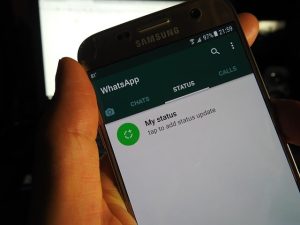How to Improve Mobile App User Engagement & Retention Rate

The mobile market has gained a rapid development in the last decade. With more powerful smartphones ever, an exploding number of apps of different categories and the triumph of the tablets, mobile Internet usage for the first time overtook the use of the Internet through the stationary computer.
The statistics of the major online players reflect this development: 60% of Google traffic comes from mobile devices, 50% of all YouTube videos are played on Smartphone and co. and Facebook, a representative of the “mobile-first” approach generates an estimated 70% of its revenues with mobile traffic.
What is sure to promote an app successfully and in the long term?
Mobile Price check – shopping over…
In E-Commerce, terminals have become indispensable mobile companions for efficient shopping. Online shopping as well as for the stroll in the business. Research, price comparisons and review check often on mobile, while orders are still mostly abandoned on PC (Personal Computer)
The mobile channel should therefore not be isolated but considered as catalyst of digital shopping. While the first contact often takes place with potential customers on your mobile website, Mobile apps still make the best medium for the regular use of your content, to deepen customer relationships and play-out of additional content.
In addition, it meets even a customer expectation: 42% of smartphone users are looking for mobile application of a specific provider according to Forrester research. But the development of an app is connected with the considerable expenditure – quite apart from the maintenance costs.
If you decide to go for the development of an expensive app, therefore, you should ensure its success by analyzing every single phase of the app lifecycle with an analytics solution.
The life cycle of an app
The life cycle of an application consists of these phases:
1. User acquirement: New users access to your app. The acquisition can be done across multiple channels such as, through marketing campaigns, social marketing, organic traffic, etc.
2. Exposure (intensity of use). The users would either have positive or negative perception of your application after a short time and use them intensively if they feel good about the app.
3. Monetization: depending on the model, from a user to customer, to a subscriber, etc.
4. Long-term binding: the app user keeps coming back over the long term and uses the app regularly. The KPIs are crucial for the success of your app, at the various stages of the information in the following sections.
1 User acquirement: Where are the app user?
In the first phase of the user acquirement of the app, although the number of downloads is a very popular metric but is unfortunately not automatically equate with the number of users. In many cases, the app will be deleted immediately after downloading.
Reviews, comments and rankings, which are regarded as indicators for the viral distribution of your product are much more important than downloads. These elements should be integrated into your regular reporting. Moreover, measure campaign performance and determine which users come across through your marketing campaign.
So you will ultimately be in the situation to identify the most effective acquisitions and to continue or to stop vice versa unnecessary investment on unsuccessful channels.You compare the most important Key Performance Indicator (KPIs) for returning and new users and investigate the behavioral differences of these two groups of users.
By monitoring new app users, you can determine how these people come across your app (messages, offers, etc.). By observing regular user, you have the opportunity to agree upon the choice of your content. The creation of customer segments is essential for building a loyalty strategy.
Here you have several options: you can define segments of the consumer of your content based on SML (small, medium, large – small, medium, large) or based on the RFM model (RFM recency, frequency, monetary value =), which is based on the use of intervals, frequency of use and the monetary value.
So, you have such ability to submit an attractive offer to users with worse RFM values or a loyalty discount to users with good RFM values.
Our acquisition picks at a glance:
- Measure the counters for the viral distribution of your app, instead of focusing only on the number of downloads.
- Meaasure the success of your marketing campaigns.
- Compare our returning and new users; and
- Create behavior-based segments to attract your customers.
2. commitment: To determine the needs of the user, Learn how your app will arrive and how they meet the needs of new users, if you examine specific Key Performance Indicators (KPIs) to the commitment, intensity of use: time spent with your app, for example, informs about the interest of your users.
It is gradually, that tends to be a bad sign. It is too short in relation to the offered content, there could be a problem in the navigation flow. Also, the frequency of use is a valuable indicator of the interest of the users. With KPI, you can determine the percentage of consumers who spend a lot of time for your content in order to focus on their behavior.
The time intervals in which your app is used are also important factor. If you are not satisfied with these figures, you should increase the attractiveness of your app: optimize the user experience or increase the number of interactions.
Keep in mind that users are very impatient when they are traveling. Watch the loading times and find out why they stop using your app, by evaluating the navigation on different mobile devices.
The analysis of the type of connection is instructive. If your app users usually use 4 G or Wi-Fi connection, you could offer more video content. Conversely, you should adjust your content accordingly if your users don’t necessarily possess a good connection, such as in rural areas or less developed societies.
Also, it’s important for you to perform crash analysis to identify and correct errors.
Our commitment tips at a glance:
- Measure the interaction of users with your app (time spent, frequency of use, etc.).
- Optimize the user experience according to the interactions.
- Maintain the performance of your app in the eye.
- Be aware of the network connection for your users.
3. Monetization: key figures
After you have won your first customers now, you can concentrate on the generated value. Depending on the business model, you need to track different KPIs. The mobile channel offers a high potential for retailers, this means, more sales, more profit, more customer proximity, more loyalty, and an improvement of brand image.
The most E-Commerce module of Web analytics solutions are also available for mobile apps. The KPIs which should be implemented, here are the conversion rate, the contents of the shopping cart and the cart crashes.
Mobile platforms are becoming increasingly important for advertisers, according to the recent study by eMarketer. Spending on mobile advertising is expected to exceed the 100 billion dollar mark in 2017 and reach more than 51.1% of the online advertising spending worldwide.
Our monetization tips at a glance:
- Measure the conversion rate.
- The contents of the shopping cart is important.
- The shopping cart crashes (M-Commerce).
4. Long term loyalty: maintaining customer relationships now comes to be the hardest part of the job. To keep the relationship with your customers in the long term, the use of the app should be observed repeatedly over a longer period.
The visitor-centric segmentation and analysis of cohorts are suitable to study the binding of the user. Cohorts are groups of visitors with the same attributes especially in terms of events here- occurred with marketing campaign in the same period, the addition of new content or the introduction of a new version of the app is also a wise step in the right direction.
To maintain a lasting customer relationship, you need to communicate with your app user. The right level and the right time is not easy to find and too much communication can be perceived as harassment or constitute nuisance to the person.
Also, Push notifications are often very effective if they are based on behavioural or personal data. You return the user to the application, inform him about an event or let him know when he is close to an interesting business.
You need to measure the success of your push notifications by determining the extent to which your brand has succeeded to generate positive reactions among users. Here, too, you are in a continuous learning process, during which you can optimize your goals and the associated messages.
Segmentation is the key to success!
Our customer loyalty tips at a glance:
- Measure the long-term use of the app to assess the actual success of your efforts.
- Compare the results of users (in cohorts) , who were exposed to different conditions.
- Communicate with your users and customize your message to your target audience (For example, Mention their Username to make it personal rather than being generalized)
- Test and compare the results.
Conclusion
There’s no app success without data-based analysis. The development is unique – mobile apps are a must in the meantime because, creating an app is an expensive affair, you should not leave their success to chance.
A Web analytics solution provides data-based information: through the analysis of the most important KPIs in the app lifecycle, you can protect yourself from unpleasant surprises and ensure that your investment pays off in the long run.
© copyright 2017 – All rights reserved






